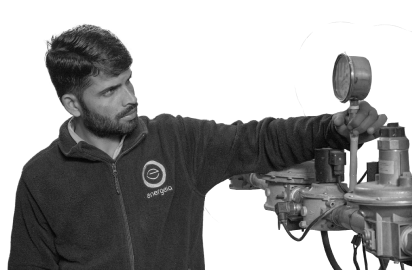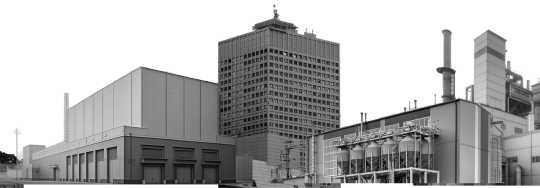In recent years, there has been growing interest in quantifying sustainability into metrics and financial reporting standards. This aims to drive private investments to address the pressing risks of Climate Change. Energy Service Companies (ESCOs) play a significant role in helping industries achieve their net-zero and ESG targets. Most multinational companies and countries have devised plans to achieve their net-zero targets. Additionally, they aim to comply with their ESG (Environment, Social, and Governance) goals.
Similarly, India has pledged it will reach its net-zero target by 2070.
To reach these goals, large energy consumers like industries and commercial facilities must rethink their approach to energy consumption. They will require new energy policies, capital investments, technical expertise, and training. Therefore, industries must execute plans on time to overhaul their existing systems for a net-zero future.
Therefore, in this journey, the obvious first step is to partner with an ESCO (Energy Service Company).
Companies will be able to measure their energy consumption through continuous energy monitoring and seek immediate opportunities for improvement. ESCOs will:
- Unlock cost and emissions savings without the client needing to undertake new capital investments
- Bring insights from technical experts who teach your organization how to analyze and interpret your energy data
- Execute all of it – including the monitoring and verification of savings
And the best part is, that ultimately the ESCO will pay for itself with its own savings.
What is an ESCO?
An ESCO stands for Energy Service Company. An ESCO is a business entity that provides a range of energy services to customers, such as energy auditing, energy conservation, energy efficiency measures, and renewable energy solutions.
The fundamental core concept behind an ESCO is that the client does not have to fund any of the upfront costs needed for the energy efficiency projects. The ESCO carries out an audit of existing utilities in a plant, identifies energy-saving opportunities, and provides a range of solutions.
Then, the ESCOs provide these services under a contract called the Energy Savings Performance (EPSC) model. They finance the project or assist the client in arranging the finances for the project. ESCOs earn remuneration based on the energy savings they are able to achieve over the contract period.
They play an important role because they allow clients to move towards energy efficiency without worrying about large upfront costs. As a result, the ESCO partnership uses a budget-neutral approach to allow existing facilities to move towards energy efficiency.
An ESCO is essentially a one-stop shop for identifying, quantifying, financing, implementing and monitoring, and verifying energy-efficient solutions. This will generate savings that will cover the cost of the project.
The main growth drivers for ESCOs are rising energy costs and the push to follow sustainability compliances.
How do ESCOs work?
The process begins with site surveys and a preliminary evaluation. This is done through comprehensive energy audits through which the ESCO identifies energy saving opportunities.
At Energeia, we believe these audits need to be done through real-time data and not estimates based on industries. We integrate existing meters at a plant and install new sensors. These sensors monitor electricity, gas flow, diesel flow, and more. Energeia subsequently connects these meters to its IoT platform, which analyzes real-time data and calculates cost savings.
Once the ESCO is certain that there are sufficient savings in the project, they provide solutions to the client. Then, after discussion, the project is finalised.
The ESCO guarantees that their suggested improvements will lead to cost savings sufficient to cover the contract term. Since the ESCO is paid only during the contract period, they remain fully involved and invested in the project’s success.The ESCO is involved in the maintenance of the equipment and continues to measure and verify the savings.
The ESCO also provides the company employees and management with the necessary training to be able to handle the plant after the contract ends.
What are the advantages of an ESCO?
i) Cost savings: ESCOs show us how an energy savings project not only does not require high upfront costs but also shows us how the project can be funded out of cash flow arising out of the project. It helps the client save money by reducing energy consumption and operating costs. This helps reduce their energy bills and improve their bottom line.
ii) Risk transfer: The client transfers all of the risks associated with the new technology to the contractor.
iii) Subject matter experts: The ESCO consists of experts across many verticals as energy efficiency is its core business. They ensure that safe, practical, and green products are used in the client’s plant. It makes sense for companies and organizations in Industries to turn to ESCOs because their inputs help them identify and implement energy-saving measures they may not know about.
iv) Performance guarantee: As the ESCO is making money by retaining a portion of the savings over the period of the contract they are directly invested to not only pursue upgrades as early as possible but also be completely invested in the most efficient running of the plant.
v) Environmental benefits: ESCOs play a crucial role in achieving net-zero goals by implementing solutions that help companies reduce carbon emissions. They also assist businesses in actualizing their sustainability guidelines, which are often linked to their Key Performance Indicators (KPIs), further emphasizing the role of ESCOs in net-zero initiatives.
vi) Compliance: ESCOs are up to date about energy-related regulations and standards that keep being enforced as governments reiterate reducing carbon emissions as a major policy priority. By staying up to date about these regulations, ESCO can help its customers avoid penalties and fines for non-compliance.
What Energeia does
At Energeia, we realise that the high upfront capital cost of new technology acts as a hindrance for facility owners. We operate on a shared savings model i.e. we only get paid when you save money. So your returns on investment begin from day one.
Across utilities, Energeia provides solutions that help save energy, emissions, and costs. As far as savings go, for E-Power (dual fuel) the savings go up to 30%, for E-Air (air compressors) this is up to 20%, up to 40% for E-Chill (Heating ventilation and air conditioning) and for E-Steam (boiler optimisation) the savings go up to 20%.
Usually, companies will sell you their technology/products and trap you in an expensive annual maintenance contract (AMC). Does this technology work? Are you able to unlock the predicted savings? How do you even calculate these savings? All of it is left for you to figure out.
We share the upfront capital cost of the installation and the customer shares a part of the savings generated by our solution for a fixed time period. This makes both parties equally invested and committed throughout the project. After the tenure of the contract, all the savings and the equipment are delivered to the client.
Then we move on to finding the next energy savings opportunity for you! We intend to create and maintain relationships in the long run.












